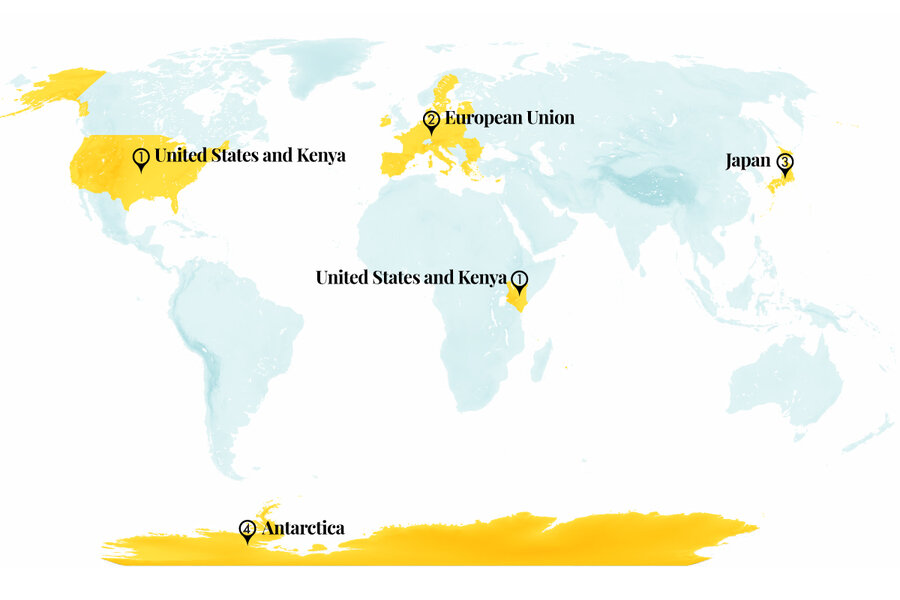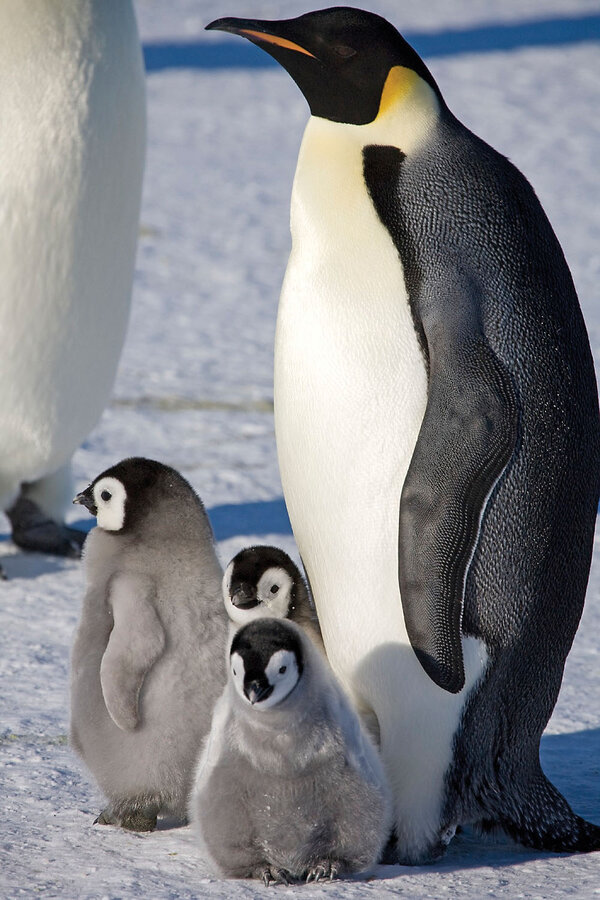In science and conservation, empowering the people most affected
Loading...
1. United States and Kenya
More scientists are sharing their study results with participants as they seek to raise ethical standards. In an international survey of clinical trials from 2014 to 2015, only about one-quarter of researchers said they provided participants with a summary of their findings in language understandable to a layperson.
But in an example of how scientists can create better connections even with remote communities, Carla Handley of Arizona State University readily agreed in 2017 to share the results of her genetics research on the Borana ethnic group in northern Kenya, at community elders’ request. A new project funded by the National Institutes of Health later made it possible for Dr. Handley and her colleagues to return to Kenya and track down participants. They used beads to explain the study to members of a community that had not had the opportunity to learn to read.
Why We Wrote This
A story focused onIn our progress roundup, we look at new ways of compensating people who have less agency. People who participate in research studies are increasingly being informed of the results. And rural residents are both conserving and harvesting their forest environments.
Dr. Handley said their responses emphasized that people can be interested in topics that are normally only introduced in formal education. “Even I – working there for a long time – didn’t give people enough credit for the amount of curiosity there was,” said Dr. Handley.
In 2018, the National Academies of Sciences, Engineering, and Medicine recommended that more researchers share results with study subjects. And last year, the United Kingdom announced plans to require researchers to share results with participants or explain why that isn’t possible.
Sources: NPR; National Academies of Sciences, Engineering, and Medicine
2. European Union
Pharmaceutical and cosmetic companies will be required to clean up micropollutants and microplastics in wastewater under new rules, following the “polluter pays” principle of environmental law. Through the process of bioaccumulation in living organisms, PFAS chemicals and other micropollutants can build up over time, multiplying their harmful effects. Under the directive, manufacturers will be responsible for paying for 80% of the associated costs of micropollutant removal. European Union governments will pay the rest to prevent products from becoming too expensive.
The new rules have been agreed upon by the European Parliament and the Council of the EU but not formally adopted. By 2035, EU members must remove organic matter from wastewater in all communities with more than 1,000 people. Additionally, by 2045, they must remove nitrogen and phosphorus – which can cause toxic algae blooms – from treatment plants covering more than 10,000 people if there is a risk to the environment. And governments will have to monitor sewage for microplastics, PFAS (often described as”forever chemicals”), and antimicrobial resistance.
The directive is part of a broad push by the EU to combat water pollution, though critics say some governments have been slow to enforce existing wastewater rules. Last year, the EU banned intentionally added microplastics, such as microbeads in shower gels.
Sources: The Guardian, Reasons to be Cheerful
3. Japan
More married women are entering the labor force, underscoring a shift in attitudes around women and work. National policy and cultural convention have long encouraged women to quit their jobs after having a child. But in 2022, there were a record 30.35 million working women in Japan, and the share of households with a stay-at-home wife dipped below 30%.
Last October, a report found that some 1.1 million married women were limiting their work hours to avoid reaching the level (about $8,900 annually) at which employees pay into public pension and insurance programs. The government announced that it would provide subsidies to mitigate the effects of the “income wall.” At home, most duties still tend to fall to women: Just 17% of Japanese men use parental leave when it’s available, and women spend five times more hours on chores than men do.
Advocates say a greater cultural shift is needed to ease the stark choice between career and family for women. While economists agree that societies making full use of women’s skills are more productive and prosperous, Japan’s government has struggled for two decades to fulfill promises to create policies that engage women in work and government more fully. The pension program is due for its regular review next year, when experts anticipate lawmakers will enact further reforms.
Sources: The Economist, Forbes, The Japan Times, The New York Times
4. Antarctica
A scientist discovered four colonies of emperor penguins via satellite images. Unlike other penguins, the iconic birds rely on “landfast” ice attached to the shore for breeding in the winter. In 2022, landfast ice coverage fell to the lowest level ever recorded, leading to the likely loss of chicks that lack waterproof feathers before fledging. The discovery of about 5,700 pairs of the world’s largest penguins across four sites marks a rare bright spot for the species, which scientists estimate could face population collapse by the end of the century.
In images taken by two satellites between 2018 and 2022, one colony was previously thought to have disappeared altogether. The total number of known colonies is now 66. Scientists say they regularly comb through satellite photos searching for signs of the birds. Their characteristic brown guano can be seen against the backdrop of Antarctic ice even from space.
Geographic information scientist Peter Fretwell wrote that the discovery’s contribution to the total population is likely minimal, but that the findings provide vital insight into colony location and distribution. “As the resolution of satellites becomes greater,” wrote Dr. Fretwell, “it may be that some very small, unreported breeding aggregations may still be found that have been missed by coarser imagery.” There are some 600,000 emperor penguins remaining in the wild.
Sources: Smithsonian Magazine, Antarctic Science, The New York Times
World
Paying rural residents for reforestation – while also allowing them to harvest timber – can strike a balance among social, economic, and environmental concerns. Regrowing tropical forests is considered vital to the health of the Earth, and the Indigenous peoples who live on these lands are key to stewardship that also helps meet the world’s carbon mitigation targets. An analysis published in December looked at combinations of incentives for landholders to see how all three priorities could be maximized.
Early programs of payment for ecosystem services to landholders and carbon payments by corporations have been criticized for a focus on economic efficiency. Seeking to examine these efforts, the analysis made use of 1.4 million tree measurements taken over 15 years in Panama. Researchers examined a variety of sites and tree species, from naturally regrowing forests to an attempt to rehabilitate a teak plantation. The study noted at least one successful combination: when landholders were given reliable annual payments, not contingent upon the size of their trees, and allowed to harvest timber from their labor. The incentives created more vibrant forests in the long term, and the income was competitive compared with less sustainable options for the landholders, such as cattle rearing.
Sources: The Conversation, Nature Communications











